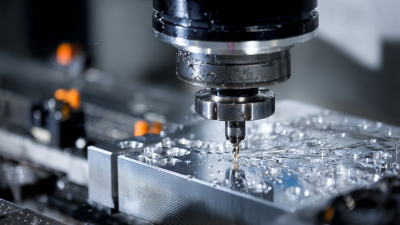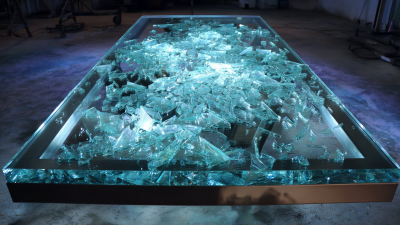The Science Behind the Amazing Glass Breaking Table Phenomenon
In the realm of extraordinary physical phenomena, the
"Glass Breaking Table" stands out as a captivating spectacle that combines both artistry and science. This mesmerizing event, often witnessed in performance arts
or physics demonstrations, draws attention not only for its visual appeal but also for the intricate dynamics at play. By examining the fundamental principles of
sound waves, resonance, and the material
properties of glass, we uncover the fascinating science that enables a solid object to shatter with seemingly no effort. This exploration into the "Glass Breaking
Table" invites enthusiasts and curious minds alike to delve into the mechanics behind the phenomenon, providing tips and insights into how sound frequencies can
induce materials to reach their breaking point. Join us as we unravel the scientific magic that makes this phenomenon possible, blending entertainment with
deep intellectual intrigue.
Understanding the Basics of the Glass Breaking Table Phenomenon
The glass breaking table phenomenon, often showcased in performance arts, is an intriguing interplay of physics and human perception. This phenomenon occurs when a performer strikes a glass surface in a manner that creates specific frequencies, aligning with the glass's natural resonant frequency. According to a study published in the Journal of Applied Physics, materials like tempered glass can have resonant frequencies that range dramatically, making them sensitive to acoustic waves. This explains why certain tones can shatter glass while others have no effect at all.
To appreciate the science behind this phenomenon, it's vital to understand the relationship between frequency, amplitude, and the structural integrity of materials. When sound waves reach a glass object at a matching frequency and an adequate intensity, the glass cannot dissipate the energy effectively, leading to a catastrophic failure. This is why performers often practice with precision, ensuring they strike the glass just right — it's not merely luck, but a calculated approach grounded in physics.
Tips: To replicate a simplified version of this phenomenon, experiment with tuning forks near a glass bowl filled with water. Adjust your distance and angle until you observe ripples in the water, demonstrating how sound can influence another medium. Additionally, always remember to wear protective eyewear when experimenting with materials that can break or shatter, ensuring a safe environment while exploring these fascinating physical principles.
The Role of Resonance and Frequency in Shattering Objects
The phenomenon of glass breaking due to resonance and frequency is a captivating display of physics in action. When an object, like a wine glass, is subjected to sound waves that match its natural frequency, it begins to vibrate. If the sound intensity is sufficiently high, these vibrations can grow increasingly pronounced, ultimately leading to the destructive shattering of the glass. This process is governed by the principles of resonance, where energy transfer occurs effectively at specific frequencies, amplifying the vibrations until the material can no longer withstand the strain.

Tips for those experimenting with resonance: First, ensure you understand the natural frequencies of the objects you’re working with. Not all materials will respond to sound in the same way. Secondly, use a controlled environment to manipulate sound intensity, as an excess may create unintended hazards. Lastly, consider using a frequency generator app to help you precisely target the required frequencies for your experiment. This can serve as an exciting and visually stunning demonstration of the principles of sound and material science.
Materials Science: Glass Properties That Lead to Breakage
The properties of glass that lead to breakage are deeply rooted in materials science, particularly in the understanding of fracture mechanics. Recent advances, such as peridynamic simulations, have provided new perspectives on how glass can fracture under ballistic impact. These simulations illustrate that glass is not a homogeneous material; rather, its fracture behavior emerges from a complex interplay of structural defects and stress concentrations. By identifying weak points within the glass network, researchers can better predict how and when breakage will occur, offering valuable insights for applications where strength and durability are critical.
Furthermore, studies investigating the molecular dynamics of sodium silicate glasses have revealed intriguing anomalies in fracture toughness, which can significantly affect how these materials behave under stress. The fracture processes are often associated with localized events at weak sites within the glass structure, demonstrating the intricate nature of glass fracture. Moreover, innovations like “self-healing” glass, which can repair damage via exposure to gamma radiation, highlight the potential for developing advanced materials that can mitigate breakage risks. Collectively, these findings emphasize the importance of understanding glass properties to improve material design and enhance the performance of glass-based applications.
Experimenting with Glass Breaking Techniques: A Step-by-Step Guide
To explore the fascinating glass breaking table phenomenon, we can conduct an experiment that highlights various techniques used to achieve this captivating effect. First, gather the necessary materials: a sturdy table, a variety of glass objects, a microphone or vibration sensor, and a sound generator. Setting the stage is essential; ensure the table is on a stable surface to prevent unwanted movement.
Begin by placing a glass object on the table, and use a sound generator to produce a specific frequency. It’s crucial to find the resonant frequency of the glass, as this is the frequency at which the glass will vibrate most vigorously. Adjust the sound output gradually while monitoring the glass object for signs of stress. When the right frequency is determined, the glass object may shatter due to resonance. Document the results, noting the frequency used and the conditions of the environment. Experimenting with different glass shapes and sizes will offer insight into the variables affecting the breaking process, leading to a deeper understanding of the science behind this striking phenomenon.
Safety Precautions and Tips for Conducting Glass Breakage Experiments
When conducting glass breakage experiments, safety should always be your top priority. According to the National Safety Council, approximately 35,000 injuries related to glass products occur in the United States each year. This statistic highlights the importance of implementing proper safety measures. Ensure that all participants wear safety goggles and durable gloves to protect against sharp glass shards. Additionally, preparing a designated break area with a clear boundary can significantly reduce the risk of unintended injury.
Tips for conducting safe glass breakage experiments include using safety equipment such as a shield or barrier to contain glass fragments. It's also wise to work in a well-ventilated area to minimize exposure to any harmful dust generated from the breakage. If you're experimenting with different types of glass, document the types used and their respective breakage thresholds to gain a deeper understanding of the material properties involved. Following these guidelines can not only enhance the safety of your experiments but also improve the quality of your observations.


Home
About Us
Products
UPVC PVC Window Machine
Aluminum Window Machine
Glass Cutting Machine
Glass Edging Machine
Insulating Glass Machine
Glass lifting machine
Glass Washing Machine
Glass Laminating Machine
Glass Sandblasting Machine
Glass Drilling Machine
CNC Glass Working Center
CNC Non-Metal Cutting Machine
The Other Glass Machinery
Application
Download
News
Contact Us








